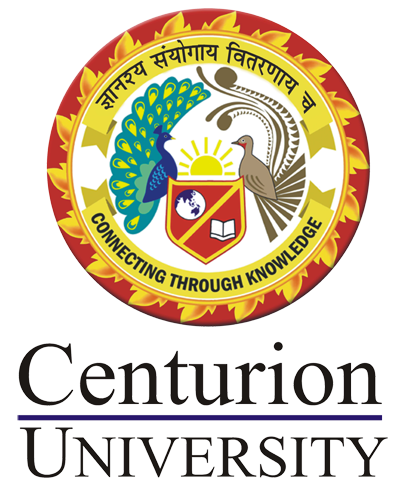Physical Pharmaceutics-I (Theory)
Course Attendees
Still no participant
Course Reviews
Still no reviews
Course Name : Physical Pharmaceutics-I
Code(Credit) : BP302T(4-0-0)
Course Objectives
The objectives of the course are
- Understand factors affecting solubility and solute-solvent interactions.
- Learn states of matter and key drug properties.
Apply surface tension and complexation principles in drug formulation.
Learning Outcomes
Upon the completion of the course student shall be able to
- Apply solubility and diffusion principles in drug formulation.
- Classify states of matter and show effects of drug physicochemical properties.
- Report on surface phenomena and model surfactant use in formulations.
- Analyze drug-protein complexation and interpret stability constants
- Choose suitable pH buffers and apply buffer calculations in pharmaceuticals..
Course Syllabus
Unit I
Solubility of drugs: Solubility expressions, mechanisms of solute solvent interactions, ideal solubility parameters, solvation & association, quantitative approach to the factors influencing solubility of drugs, Dissolution & drug release, diffusion principles in biological systems. Solubility of gas in liquids, solubility of liquids in liquids, (Binary solutions, ideal solutions) Raoult’s law, real solutions, azeotropic mixtures, fractional distillation. Partially miscible liquids, Critical solution temperature and applications. Distribution law, its limitations and applications
Unit II
States of Matter and properties of matter:State of matter, changes in the state of matter, latent heats, vapour pressure, sublimation critical point, eutectic mixtures, gases, aerosols – inhalers, relative humidity, liquid complexes, liquid crystals, glassy states, solid-crystalline, amorphous & polymorphism.
Physicochemical properties of drug molecules: Refractive index, optical rotation, dielectric constant, dipole moment, dissociation constant, determinations and applications
Unit III
Surface and interfacial phenomenon: Liquid interface, surface & interfacial tensions surface free energy, measurement of surface & interfacial tensions, spreading coefficient, adsorption at liquid interfaces, surface active agents, HLB Scale, solubilisation, detergency, adsorption at solid interface.
Unit IV
Complexation and protein binding: Introduction, Classification of Complexation, Applications, methods of analysis, protein binding, Complexation and drug action, crystalline structures of complexes and thermodynamic treatment of stability constants.
Unit V
pH, buffers and Isotonic solutions: Sorensen’s pH scale, pH determination (electrometric and calorimetric), applications of buffers, buffer equation, buffer capacity, buffers in pharmaceutical and biological systems, buffered isotonic solutions.
Recommended Books
1. Physical Pharmacy by Alfred Martin
2. Experimental Pharmaceutics by Eugene, Parott.
3. Tutorial Pharmacy by Cooper and Gunn.
4. Stocklosam J. Pharmaceutical Calculations, Lea &Febiger, Philadelphia.
5. Liberman H.A, Lachman C., Pharmaceutical Dosage forms, Tablets, Volume-1 to
3, MarcelDekkar Inc.
6. Liberman H.A, Lachman C, Pharmaceutical Dosage forms. Disperse
systems, volume 1, 2, 3. Marcel Dekkar Inc.
7. Physical Pharmaceutics by Ramasamy C and ManavalanR.
8. LaboratoryManual of Physical Pharmaceutics, C.V.S. Subramanyam, J.
Thimma settee
9. Physical Pharmaceutics by C.V.S. Subramanyam
10. Test book of Physical Phramacy, by Gaurav Jain & Roop K. Khar
Session Plan
Session 1
Solubility of drugs: Introduction
Session 2
Solubility expressions
Session 6
Diffusion principles in biological systems
Session 7
Clinical relevence of solubility
Session 8
Henry's law solubility of gas in liquid
Session 9
Solubility of liquids in liquids, (Binary solutions, ideal solutions)
Session 12
Critical solution temperature and applications
Session 14
State of matter introduction
Session 15
Chemical Interactions in states of matter
Chemical Interactions in states of matter
Session 16
Interactions in states of mater
Interactions in states of mater
Session 17
Solid state, Crystalline, amorphous, polymorphism
Solid state, Crystalline, amorphous, polymorphism
Session 18
Liquid State, Boiling, Heat of Vaporization & critical temperature
Liquid State, Boiling, Heat of Vaporization & critical temperature
Session 19
latent heats, vapour pressure
Session 20
Eutectic mixtures
Session 21
Gases, Ideal Gas, Sublimation/ Liquefaction, Aerosols–inhalers, relative humidity
Session 22
Sublimation/ Liquefaction
Session 23
Aerosols–inhalers
Session 24
Relative humidity
Session 29
Dielectric constant
Session 30
Dipole dipole interaction, refractive index
Session 31
Determination of of Physicochemical properties of drug molecules
Session 32
Applications of Physicochemical properties of drug molecules
Session 33
Surface & interfacial tensions
Session 34
Surface free energy
Session 35
Measurement of Surface and interfacial tension
Session 36
Spreading coefficient
Session 37
Spreading coefficient, adsorption at liquid interfaces
Session 38
Surface active agents
Session 39
Solubilisation, detergency
Session 42
Introduction, Classification of Complexation
Session 43
Applications of Complexation
Session 47
Crystalline structures of complexes and thermodynamic treatment of stability constants
Session 51
Buffer equation, buffer capacity
Session 52
Buffers in pharmaceutical and biological systems
Our Main Teachers
Dr. Rasmita Dash holds a Master of Pharmacy (M.Pharm) and a Doctor of Philosophy (Ph.D.) in Pharmaceutical Sciences. Her academic and research pursuits are centered around innovative approaches in drug delivery and design. With a strong foundation in pharmaceutics, her core areas of expertise include Novel Drug Delivery Systems (NDDS), Nanoparticulate Drug Delivery Systems, and […]

